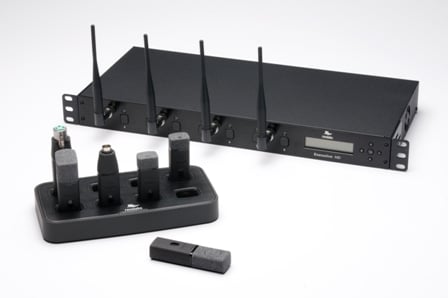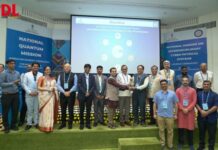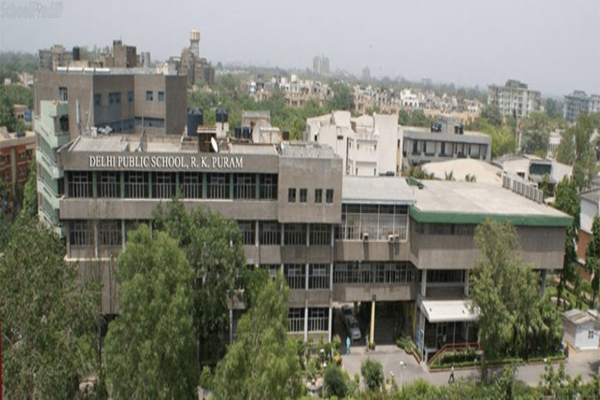 The Rani Channamma University, Belgaum, the second largest varsity in Karnataka, had recently organised a seminar on the issue ‘Management Education-Road Ahead’ and with a view to revisit the road already traversed, assess the present situation and explore ways and means to restructure the system to make it meaningful, effective and productive. C.M. Thyagaraja, Professor and Chairman, Department of Post-Graduate Studies in Business Administration at RCU’s Vidyasangama campus in Belgaum, shared his views.
The Rani Channamma University, Belgaum, the second largest varsity in Karnataka, had recently organised a seminar on the issue ‘Management Education-Road Ahead’ and with a view to revisit the road already traversed, assess the present situation and explore ways and means to restructure the system to make it meaningful, effective and productive. C.M. Thyagaraja, Professor and Chairman, Department of Post-Graduate Studies in Business Administration at RCU’s Vidyasangama campus in Belgaum, shared his views.
He said, “Management education is passing through a critical phase. There is a crisis of identity, character and quality. This is the apt time to discuss and deliberate the matter by taking stock of the situation. Management education has grown quantitatively, but not qualitatively, and contributed too little to the labour-rich but skill-poor economy”.
He further said, “Too many attractive, lucrative and competent jobs are chasing very few individuals, who are highly talented, skilled and dynamic. An average student finds it difficult to sail through the acid tests of the corporate sector. The element of professionalism, an important ingredient towards building managers, is not taught by institutions imparting management education. Communications skill for students from rural areas is like climbing the Himalayas”.
Saleable product
Like professional education, management education to has become a saleable product. From Kashmir to Kanyakumari and from Amritsar to Singur, more than 4,000 institutions have emerged in the management education landscape.
The origin of management education dates back to ancient times. It is a unique art developed by mankind along its evolution journey. Greeks, Chinese and Indian thinkers contributed to this art of getting things done by others. Strategic decisions and art of administration were adopted during the times of Koutilya. Management education is an offshoot of the industrial revolution which created the factory system, thereby providing a ledge to the art of management. In the Indian subcontinent, management education has come over a period of past 50 years, whereas Europeans are teaching this education since the last 400 years.
Due to the slow rate of economic growth after independence till 1990 the opportunities created by industry were too few. Globalisation gave a big boost to the economy while the service sector came to dominate other sectors. This has necessitated the demand for management education. The Indian landscape of management education is composed of the following:
The IIMs (Indian Institutes of Management) top the list which pick the very best. . Management institutes affiliated to universities, autonomous institutions approved by the All India Council for Technical Education, institutions without the approval of AICTE, and foreign universities are also offering degree and postgraduate degrees in India.
The element of ‘skill quotient’ is not appropriately addressed to add value to the education. Faculty members with industrial experience are less in numbers to share their expertise.
Interestingly, the former Chairman of the University Grant Commission, Arun Nigavekar, who addressed the delegates at the seminar, observed that under the changed circumstances it become inevitable to shun the old curriculum in management education and prepare CEOs by directing them to set goals and develop necessary skills to pursue them.
Citing the results of a survey conducted by the University of Michigan based on the interview with 1,500 executives, he said it was found that the subject to be learnt changed on priority. But the same subject became redundant.
He also quoted from the survey to say that three per cent of the sample population who set goals had more net worth after 25 years than those who did not.
 Revolab, a US based manufacturer of wireless audio products for enterprise collaboration and professional audio applications, has demonstrated Wireless products based on the new technology of unified communications providing crystal clear audio quality, versatility and flexibility of movement. Revolab has chosen Presto for the distribution on their product in the Indian market.
Revolab, a US based manufacturer of wireless audio products for enterprise collaboration and professional audio applications, has demonstrated Wireless products based on the new technology of unified communications providing crystal clear audio quality, versatility and flexibility of movement. Revolab has chosen Presto for the distribution on their product in the Indian market.








 The Rani Channamma University, Belgaum, the second largest varsity in Karnataka, had recently organised a seminar on the issue ‘Management Education-Road Ahead’ and with a view to revisit the road already traversed, assess the present situation and explore ways and means to restructure the system to make it meaningful, effective and productive. C.M. Thyagaraja, Professor and Chairman, Department of Post-Graduate Studies in Business Administration at RCU’s Vidyasangama campus in Belgaum, shared his views.
The Rani Channamma University, Belgaum, the second largest varsity in Karnataka, had recently organised a seminar on the issue ‘Management Education-Road Ahead’ and with a view to revisit the road already traversed, assess the present situation and explore ways and means to restructure the system to make it meaningful, effective and productive. C.M. Thyagaraja, Professor and Chairman, Department of Post-Graduate Studies in Business Administration at RCU’s Vidyasangama campus in Belgaum, shared his views.
 The internal difference of opinions in the Nagpur secondary education department is causing to get its education officer (EO) and the department is serving without its EO for seven months. For seven months the department is without its EO as Zilla Parishad’s CEO Amit Saini has refused to accept the official deputed by the state education department.
The internal difference of opinions in the Nagpur secondary education department is causing to get its education officer (EO) and the department is serving without its EO for seven months. For seven months the department is without its EO as Zilla Parishad’s CEO Amit Saini has refused to accept the official deputed by the state education department.
 Due to the slow server of the higher education department of Bhopal, Madhya Pradesh, students are facing great difficulties in applying for online admission. They are facing difficulties in downloading the admission forms online across the sate.
Due to the slow server of the higher education department of Bhopal, Madhya Pradesh, students are facing great difficulties in applying for online admission. They are facing difficulties in downloading the admission forms online across the sate.
 With Secondary Education Board of Assam (SEBA) delaying declaration of HSLC results to June 15, the future of hundreds of students considering switching to CBSE for Plus 2 hangs in balance as most of CBSE-affiliated schools would have completed their admission procedure before June 15.
With Secondary Education Board of Assam (SEBA) delaying declaration of HSLC results to June 15, the future of hundreds of students considering switching to CBSE for Plus 2 hangs in balance as most of CBSE-affiliated schools would have completed their admission procedure before June 15.
 Tamil Nadu Chief Minister’s freebie scheme of gifting free laptops to students has brought exciting result to the state. The laptop worth Rs 15,000 has an Intel dual-core processor, a clock speed of 2.1 GHz, RAM of 2 GB and 320-GB memory.
Tamil Nadu Chief Minister’s freebie scheme of gifting free laptops to students has brought exciting result to the state. The laptop worth Rs 15,000 has an Intel dual-core processor, a clock speed of 2.1 GHz, RAM of 2 GB and 320-GB memory.
 The All India Council of Technical Education has taken new initiative to curb ragging. The body has issued directives including mandatory submission of affidavit by the students.
The All India Council of Technical Education has taken new initiative to curb ragging. The body has issued directives including mandatory submission of affidavit by the students.
 Now you can go for a dual degree from foreign universities while being in India. Recently Country’s higher education regulator, the University Grants Commission, has opened doors for world top 500 universities to start dual degree or twining courses with Indian higher education institutions.
Now you can go for a dual degree from foreign universities while being in India. Recently Country’s higher education regulator, the University Grants Commission, has opened doors for world top 500 universities to start dual degree or twining courses with Indian higher education institutions.
 Technology enabled education is gaining momentum and keeping pace with this, technology solution provider Pitney Bowes plans to digitize mark sheets, certificates and degrees at various Indian institutions and universities
Technology enabled education is gaining momentum and keeping pace with this, technology solution provider Pitney Bowes plans to digitize mark sheets, certificates and degrees at various Indian institutions and universities











